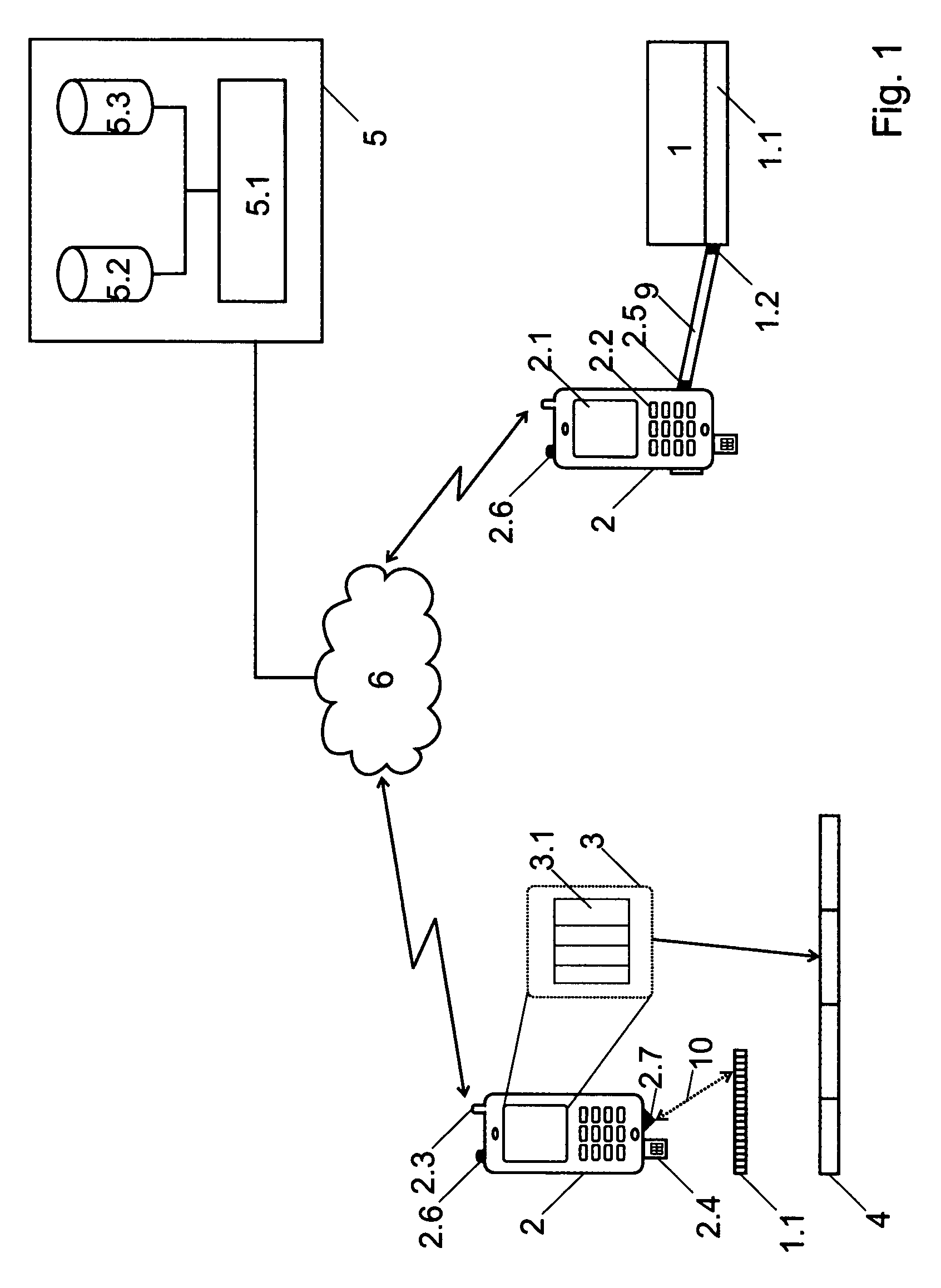Method for directing a user of a mobile device from a current location to a product
a mobile device and current location technology, applied in the field of product directing to a mobile device user, can solve the problems of losing valuable time, laborious search may indeed have to start, and not being able to be found in the shop
- Summary
- Abstract
- Description
- Claims
- Application Information
AI Technical Summary
Benefits of technology
Problems solved by technology
Method used
Image
Examples
Embodiment Construction
[0028]FIG. 1 describes an example for directing a user of a mobile device 2 from his current location to a product 1 that can be picked up in a shop.
[0029]The user has recorded in advance from a magazine, from the Internet or from further media information sources an identification code, e.g. an electronic product code 1.1 (EPC=Electronic Product Code) or a barcode 11. Such codes can also be recorded directly by the mobile device, e.g. contactlessly over an infrared or Bluetooth interface or by means of other recording means such as an optical barcode reader 2.7 with e.g. a laser scanner 10 or an RFID reader 2.5 of an RFID element affixed to a product 1 with a product code, e.g. an EPC code 1.1 or a further code 1.2 derived from the product. For recording such codes, corresponding reader devices can be connected directly to the mobile device. In future, most mobile devices such as mobile telephones will also have several integrated reader devices. Currently, many mobile telephones h...
PUM
 Login to View More
Login to View More Abstract
Description
Claims
Application Information
 Login to View More
Login to View More - R&D
- Intellectual Property
- Life Sciences
- Materials
- Tech Scout
- Unparalleled Data Quality
- Higher Quality Content
- 60% Fewer Hallucinations
Browse by: Latest US Patents, China's latest patents, Technical Efficacy Thesaurus, Application Domain, Technology Topic, Popular Technical Reports.
© 2025 PatSnap. All rights reserved.Legal|Privacy policy|Modern Slavery Act Transparency Statement|Sitemap|About US| Contact US: help@patsnap.com


